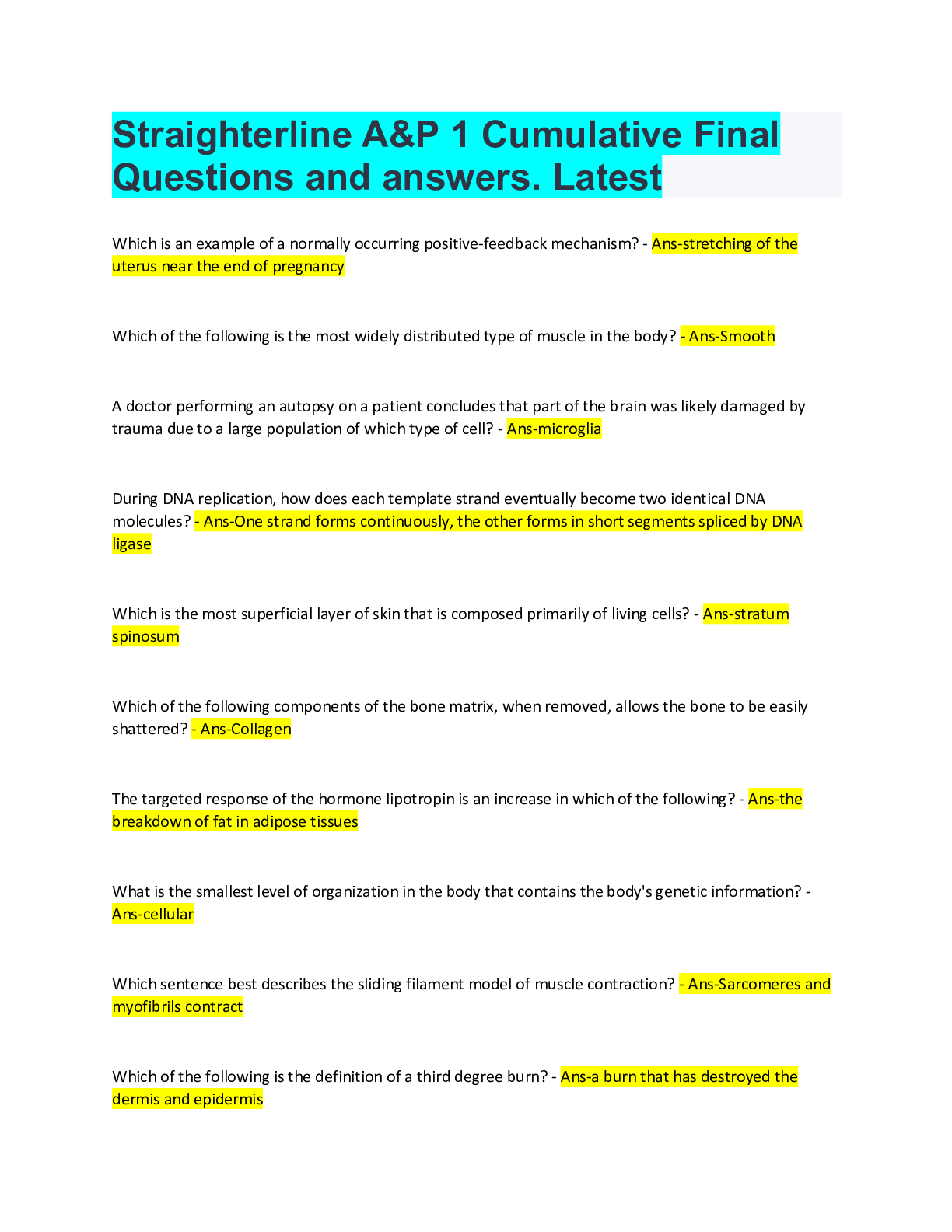*NURSING > QUESTIONS & ANSWERS > NURS 209 Practice Questions HESI (PATHO BOOK) Latest Update Already Passed (All)
NURS 209 Practice Questions HESI (PATHO BOOK) Latest Update Already Passed
Document Content and Description Below
NURS 209 Practice Questions HESI (PATHO BOOK) Latest Update Already Passed A decrease in workload, use, pressure, or blood supply appropriately describes: A. physiologic atrophy. B. pathologic at... rophy. C. hypertrophy. D. hyperplasia. ✔✔B. pathologic atrophy. Pathologic atrophy is a decrease in cell size due to decreased use. Physiologic atrophy usually occurs early in development; for example, the thymus gland atrophies during childhood. Hypertrophy is an increase in cell size. Hyperplasia is an increase in the number of cells. The appropriate term for the reversible replacement of one mature cell by another is: A. metaplasia. B. hyperplasia. C. dysplasia. D. atypical hyperplasia. ✔✔A. metaplasia. The term metaplasia refers to one cell type being replaced by another. Hyperplasia is an increase in the number of cells, not a change in their type. Dysplasia, also referred to as atypical hyperplasia, refers to abnormal changes in the size, shape, and organization of cells. The ability to increase intracellular calcium concentrations and affect the nervous and hematopoietic systems is a characteristic of: A. carbon monoxide. B. carbon tetrachloride. C. lead. D. mercury. ✔✔C. lead. Lead is able to increase intracellular calcium concentrations and may also become a calcium substitute. It affects the hematopoietic system. It is often found in paint, dirt, and pottery. Carbon tetrachloride, formerly used in dry cleaning, is converted into a highly toxic free radical that damages the liver. Carbon monoxide is an asphyxiate gas that interrupts respiration. Mercury is a heavy metal and can worsen chronic diseases like Alzheimer disease and multiple sclerosis. A patient with a collection of blood that is located between the skull and the dura is diagnosed with a condition referred to as a(n): A. epidural hematoma. B. contusion. C. subdural hematoma. D. abrasion. ✔✔A. epidural hematoma. An epidural hematoma is a collection of blood between the inner surface of the skull and the dura. A subdural hematoma is a collection of blood between the surface of the dura and the brain. A contusion is a bruise or bleeding into the skin and underlying tissue. Abrasion is a scrape caused by removal of the superficial layers of the skin. A tear or rip of the skin with a jagged and ir [Show More]
Last updated: 1 year ago
Preview 1 out of 147 pages

Buy this document to get the full access instantly
Instant Download Access after purchase
Buy NowInstant download
We Accept:

Reviews( 0 )
$14.00
Can't find what you want? Try our AI powered Search
Document information
Connected school, study & course
About the document
Uploaded On
Sep 16, 2023
Number of pages
147
Written in
Additional information
This document has been written for:
Uploaded
Sep 16, 2023
Downloads
0
Views
99









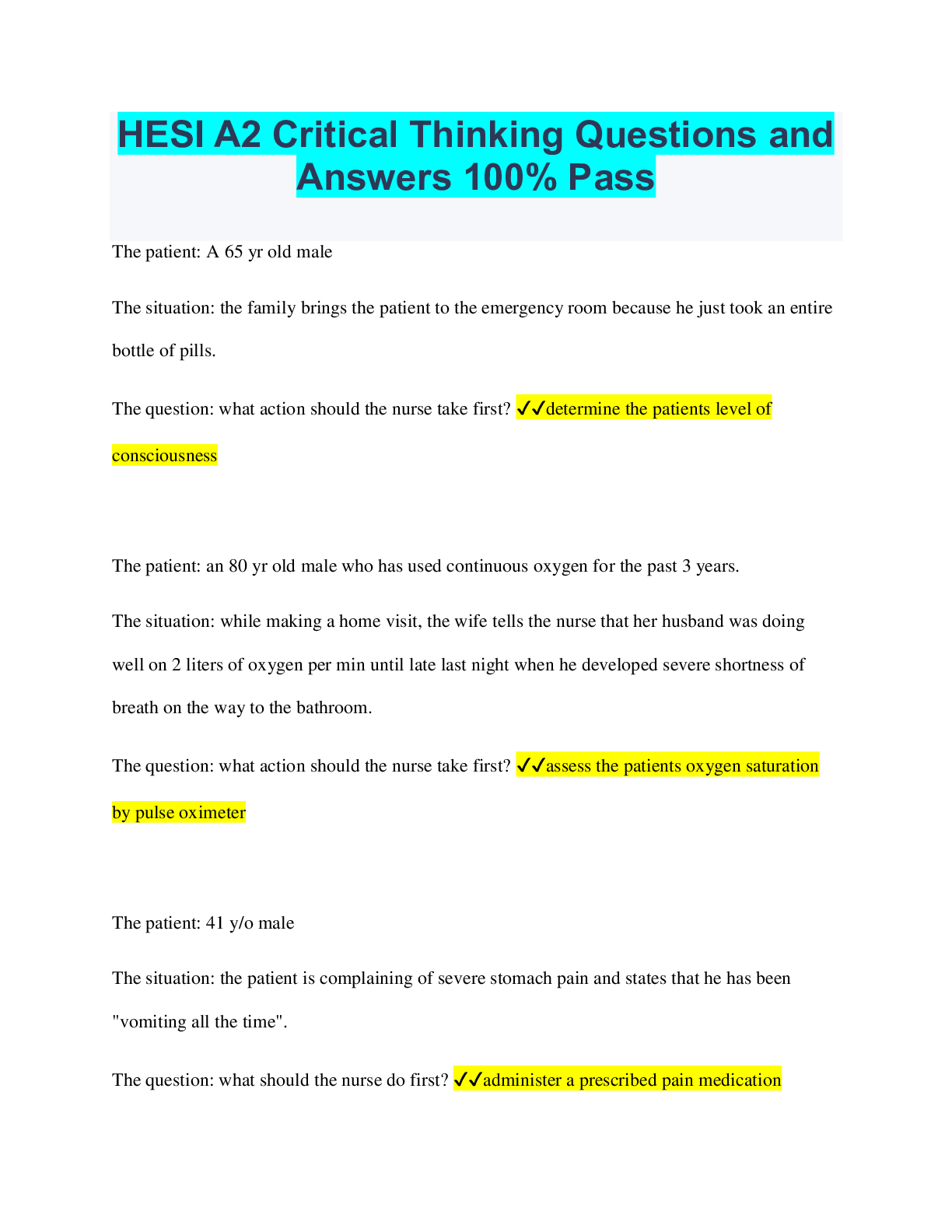
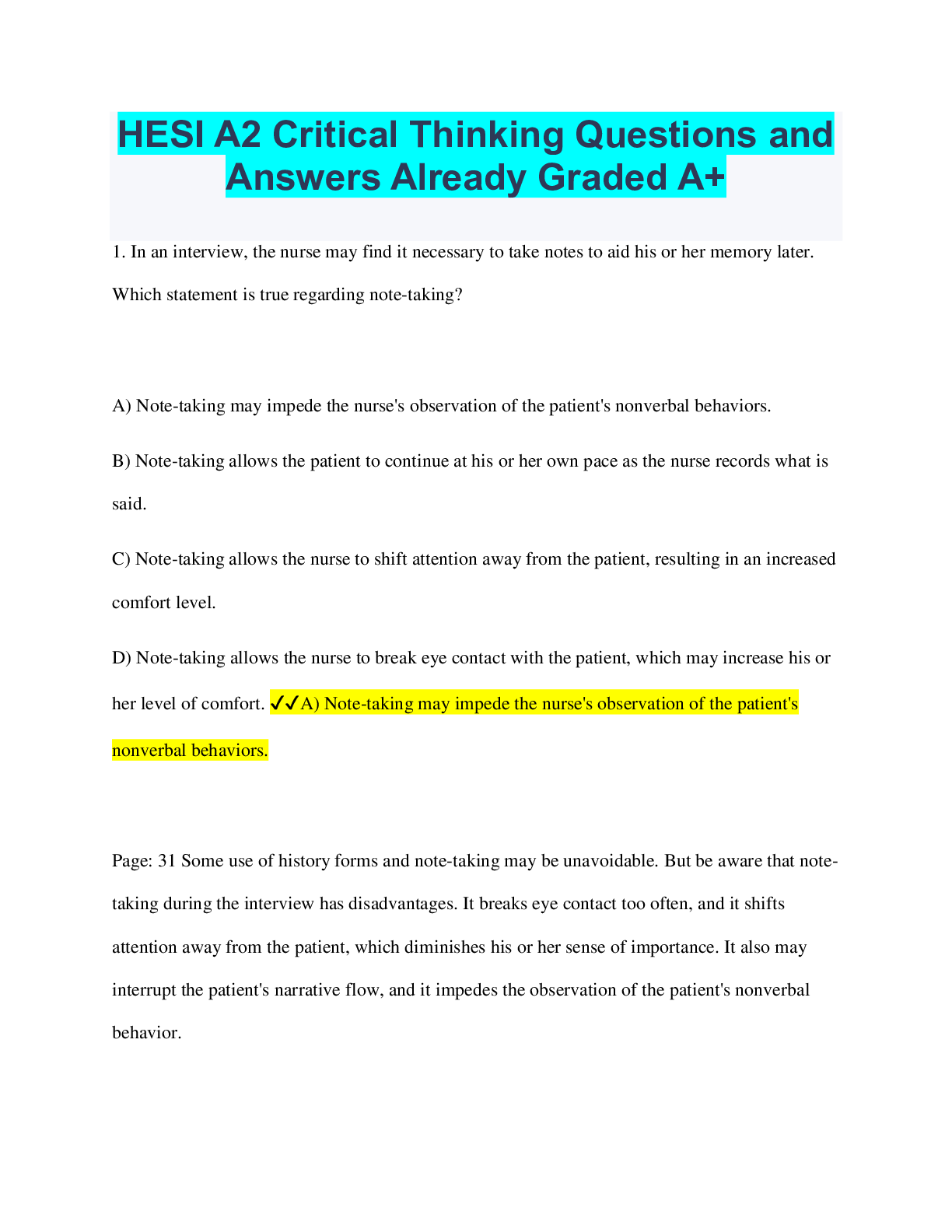
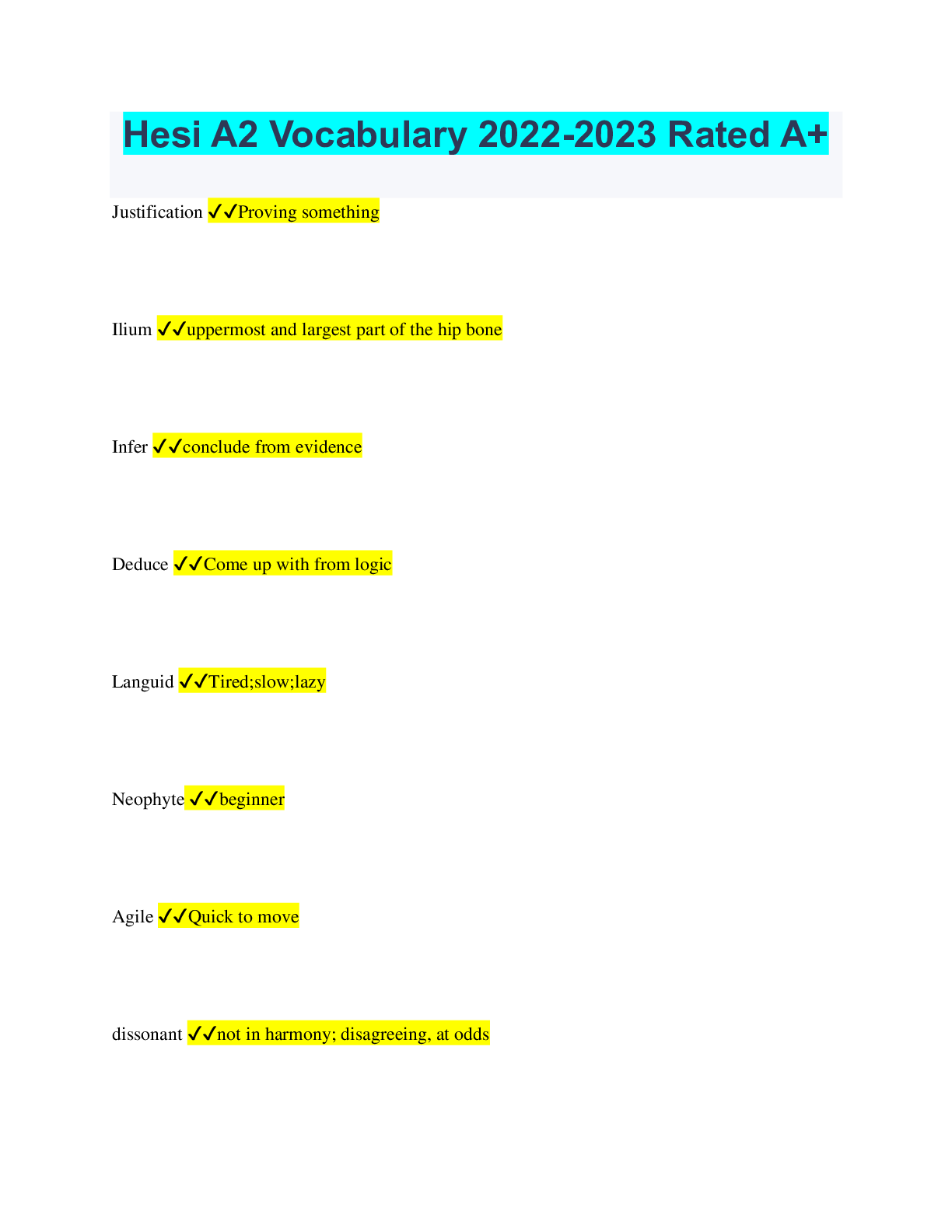




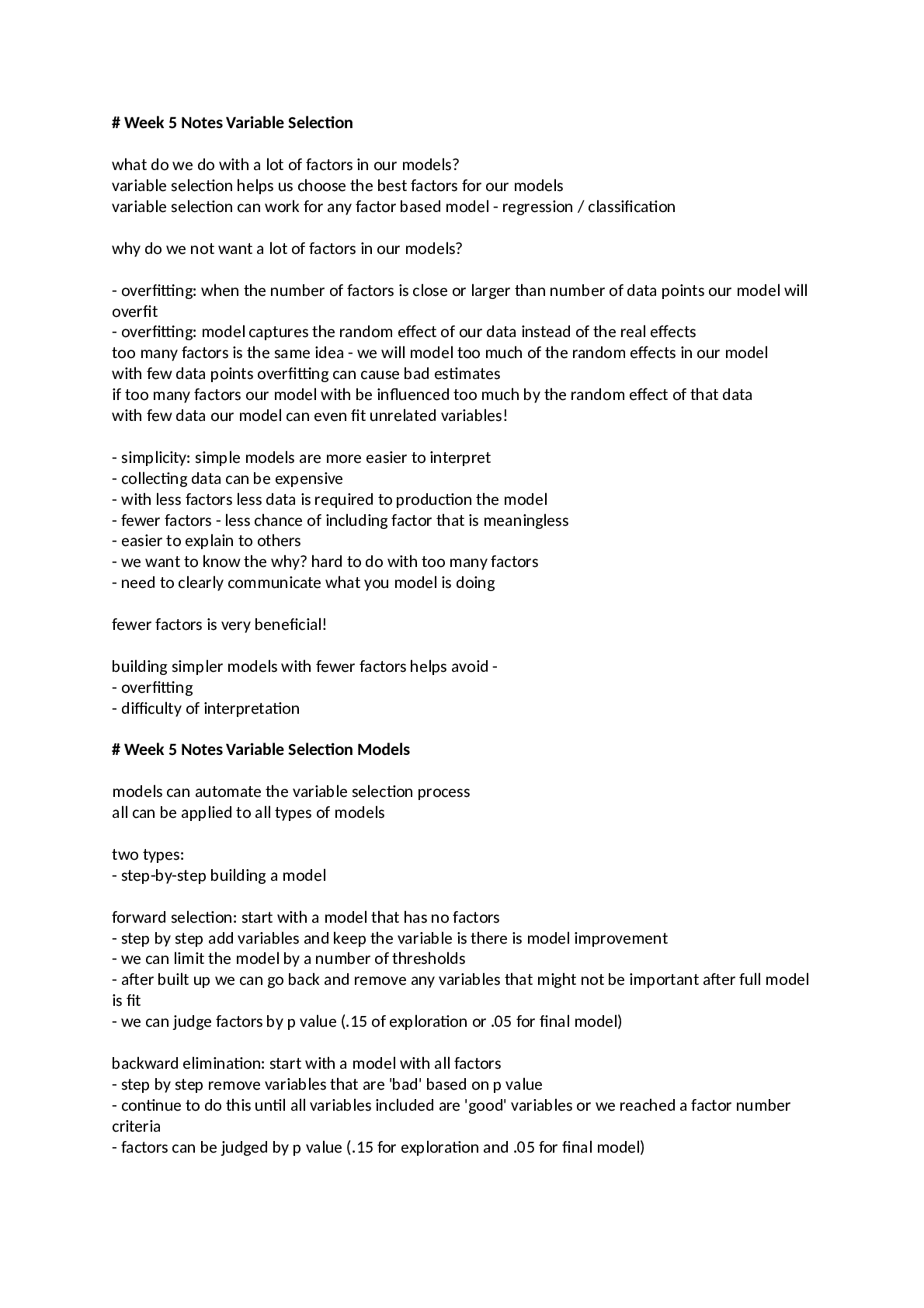
.png)

.png)
.png)
.png)
